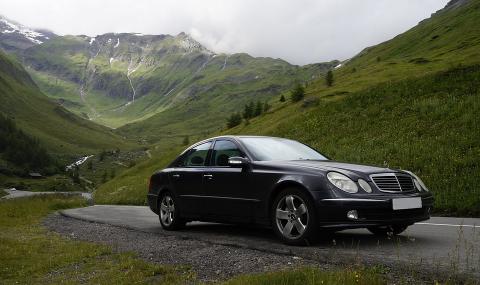Selling a Vision: What Transit Agencies Should Learn from Car Companies

Cross-posted from Frontier Group.
If we’re going to combat global warming, reduce air pollution, and create livable cities, we need more people riding transit. But for decades, transit has been heavily schooled in the marketing department by its main competitor: the auto industry.
We can all picture a good car commercial – empty roads, gorgeous views, exhilarating music, a sleek car taking you through it all. It actually makes your heart race a bit; it makes you want to turn off the TV and go for a long drive.
But how often do you really do this with your car?
My hunch is that more often, you’re stuck in traffic on a suburban road while your 9-year old and her soccer teammates throw Cheetos at each other in the backseat.
In car ads, none of that matters. The car companies sell a dream, where cars literally represent the American dream. In these ads, the car itself is freedom. It allows you to find your true self, your dream self where you drive fast, you go into the mountains and nothing stands between you and panoramic vistas. In the city version of your car-commercial-dream-self, you skid around corners on empty streets and pull up to nice restaurants, usually with an attractive passenger by your side. Wow.
Never mind that, in reality, America’s dependence on private vehicles is shackling us to a number of profound problems. To start, driving is stressful and studies have linked commuting by car to spikes of high blood pressure, higher cholesterol, depression, anxiety, and more. Owning a car is also expensive and Americans are increasingly going into debt to pay for them. The infrastructure needed to support cars is expensive too, with governments going into debt, and taxpayers ultimately bearing the cost, for our vast system of roads. Having so many cars on the roads causes parking problems, traffic, crashes, injuries, deaths, smog, and air pollution. Surpassing all of this, shuttling ourselves around, usually alone, in 2-ton vehicles powered by fossil fuels is killing the planet.
Car commercials make you forget about all that too.
The auto industry has been remarkably successful, despite all the downsides of car ownership, in connecting with Americans on a deep, emotional level.
Where is this same approach for transit?
The most marketing I see from my transit agency is how I could be killed by transit for doing something dumb. I’m not saying we shouldn’t run ads to improve safety (and considering cars kill 40,000 people every year, I’d like to see more ads for safer streets), but public transportation has a lot more to offer.
When it works well, transit is pretty amazing and should be able to sell itself. Where are the ads showing concert goers or sports fans arriving downtown on a light rail, instead of paying $30 for parking and waiting in traffic to exit the venue? What about commuters stuck in gridlock versus someone reading a book on a bus with a nice dedicated lane? Instead, ads on TV tell stories of this hardworking man who suffers on a bus every day until he saves up enough money to buy a truck.
Sure, there are days when someone spills a smoothie on the seat next to you, but many people who take transit quickly come to its defense. After Elon Musk, billionaire CEO of the car company Tesla, bemoaned transit as a “pain in the ass” that nobody likes, largely because “there’s a bunch of random strangers,” Twitter responded in force. Thousands of people used the hashtag #GreatThingsThatHappenedOnTransit to write about wonderful things that happen on transit, including meeting friends or spouses, hearing Christmas carolers, spending time with their children or with a good book, and yes, interacting with strangers who need help with directions or even a cough drop.
Transit agencies need to make public transportation work better, brag about its success, and market it. Of course, that can be challenging for cash-strapped agencies struggling to even keep the system going, but consider similar efforts around energy efficiency or recycling. Spending money to encourage people to reduce electricity use or properly sort their trash helps the whole system work better – and so does encouraging people to ride transit as opposed to driving alone. Investing resources to highlight the benefits of transit and to educate people how to use it won’t change behavior overnight, but it’s a start, and even small boosts in ridership can help improve a city’s transportation system.
There’s no need to reinvent the wheel here. Car companies have been incredibly successful using marketing techniques that sell an ideal, and transit agencies should learn from their example. After all, they have an even better vision to sell.
Alana Miller is a Denver-based communications director and a policy analyst at Frontier Group.


